Filter by
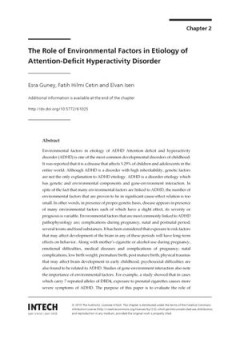
Westernization The Role of Mass Media On Body Image and Eating Disorders
Westernization: The Role of Mass Media on Body Image and Eating Disorders
- Edition
- -
- ISBN/ISSN
- 9789535100010
- Collation
- -
- Series Title
- -
- Call Number
- -
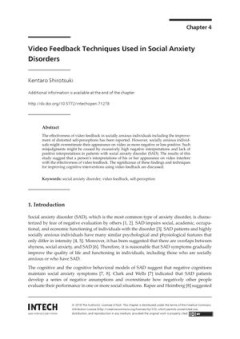
Video Feedback Techniques Used in Social Anxiety Disorders
The effectiveness of video feedback in socially anxious individuals including the improvement of distorted self-perceptions has been reported. However, socially anxious individuals might overestimate their appearance on video as more negative or less positive. Such misjudgments might be caused by excessively high negative interpretations and lack of positive interpretations in patients with soc…
- Edition
- -
- ISBN/ISSN
- 9789535139270
- Collation
- -
- Series Title
- -
- Call Number
- -
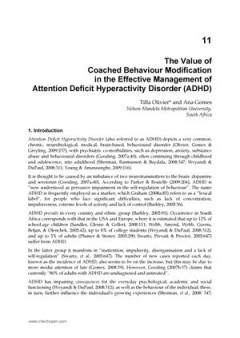
The Value of Coached Behaviour Modification in the Effective Management of At…
The Value of Coached Behaviour Modification in the Effective Management of Attention Deficit Hyperactivity Disorder (ADHD)
- Edition
- -
- ISBN/ISSN
- 9789533078687
- Collation
- -
- Series Title
- -
- Call Number
- -
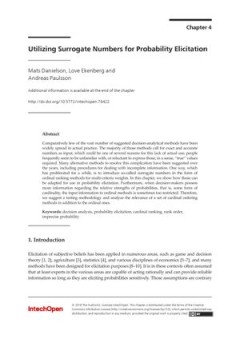
Utilizing Surrogate Numbers for Probability Elicitation
Comparatively few of the vast number of suggested decision-analytical methods have been widely spread in actual practice. The majority of those methods call for exact and accurate numbers as input, which could be one of several reasons for this lack of actual use; people frequently seem to be unfamiliar with, or reluctant to express those, in a sense, “true” values required. Many alternativ…
- Edition
- -
- ISBN/ISSN
- 9781789237955
- Collation
- -
- Series Title
- -
- Call Number
- -
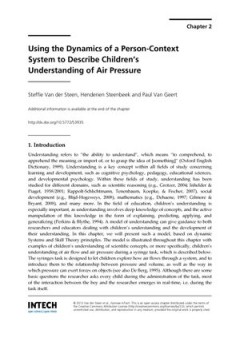
Using the Dynamics of a Person-Context System to Describe Children’s Unders…
Using the Dynamics of a Person-Context System to Describe Children’s Understanding of Air Pressure
- Edition
- -
- ISBN/ISSN
- 9789535108559
- Collation
- -
- Series Title
- -
- Call Number
- -
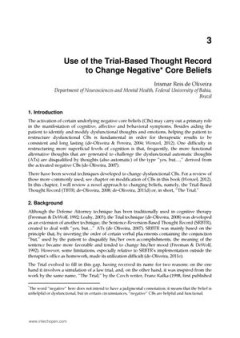
Use of the Trial-Based Thought Record to Change Negative Core Beliefs
Use of the Trial-Based Thought Record to Change Negative Core Beliefs
- Edition
- -
- ISBN/ISSN
- 9789535103127
- Collation
- -
- Series Title
- -
- Call Number
- -
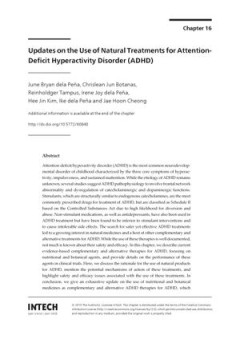
Updates on the Use of Natural Treatments for Attention-Deficit Hyperactivity …
Attention-deficit/hyperactivity disorder (ADHD) is the most common neurodevelopmental disorder of childhood characterized by the three core symptoms of hyperactivity, impulsiveness, and sustained inattention. While the etiology of ADHD remains unknown, several studies suggest ADHD pathophysiology to involve frontal network abnormality and dysregulation of catecholaminergic and dopaminergic func…
- Edition
- -
- ISBN/ISSN
- 9789535121664
- Collation
- -
- Series Title
- -
- Call Number
- -
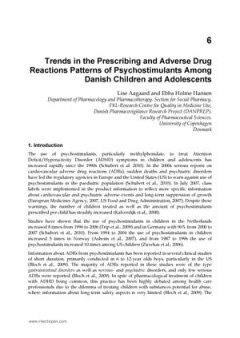
Trends in the Prescribing and Adverse Drug Reactions Patterns of Psychostimul…
Trends in the Prescribing and Adverse Drug Reactions Patterns of Psychostimulants Among Danish Children and Adolescents
- Edition
- -
- ISBN/ISSN
- 9789533078687
- Collation
- -
- Series Title
- -
- Call Number
- -
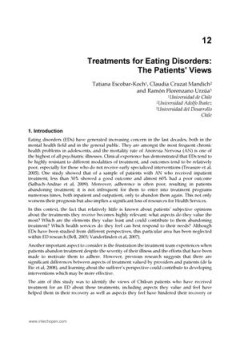
Treatments For Eating Disorders The Patients' Views
Treatments for Eating Disorders: The Patients' Views
- Edition
- -
- ISBN/ISSN
- 9789535100010
- Collation
- -
- Series Title
- -
- Call Number
- -
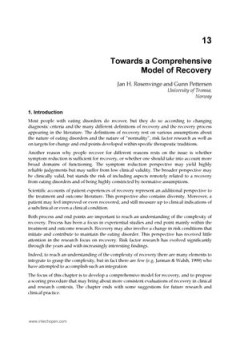
Towards a Comprehensive Model of Recovery
Towards a Comprehensive Model of Recovery
- Edition
- -
- ISBN/ISSN
- 9789535100010
- Collation
- -
- Series Title
- -
- Call Number
- -
 Computer Science, Information & General Works
Computer Science, Information & General Works  Philosophy & Psychology
Philosophy & Psychology  Religion
Religion  Social Sciences
Social Sciences  Language
Language  Pure Science
Pure Science  Applied Sciences
Applied Sciences  Art & Recreation
Art & Recreation  Literature
Literature  History & Geography
History & Geography